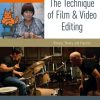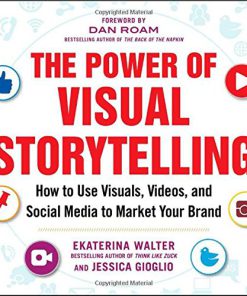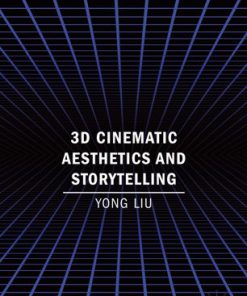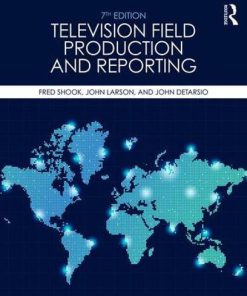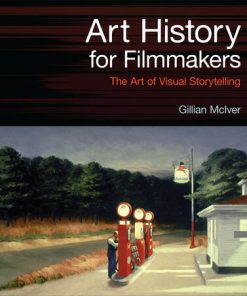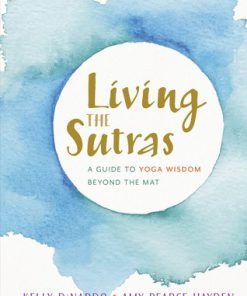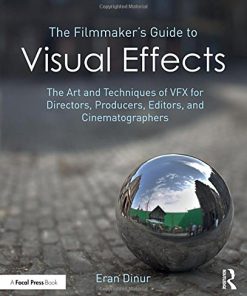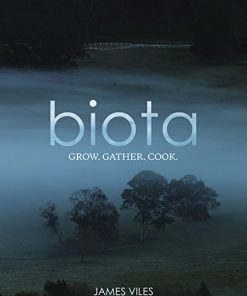The Art of Cinematic Storytelling A Visual Guide to Planning Shots Cuts and Transitions 1st edition by Kelly Gordon Brine 0190054352 9780190054359
$50.00 Original price was: $50.00.$25.00Current price is: $25.00.
The Art of Cinematic Storytelling A Visual Guide to Planning Shots Cuts and Transitions 1st edition by Kelly Gordon Brine- Ebook PDF Instant Download/Delivery:9780190054359,0190054352
Full download The Art of Cinematic Storytelling A Visual Guide to Planning Shots Cuts and Transitions 1st edition after payment
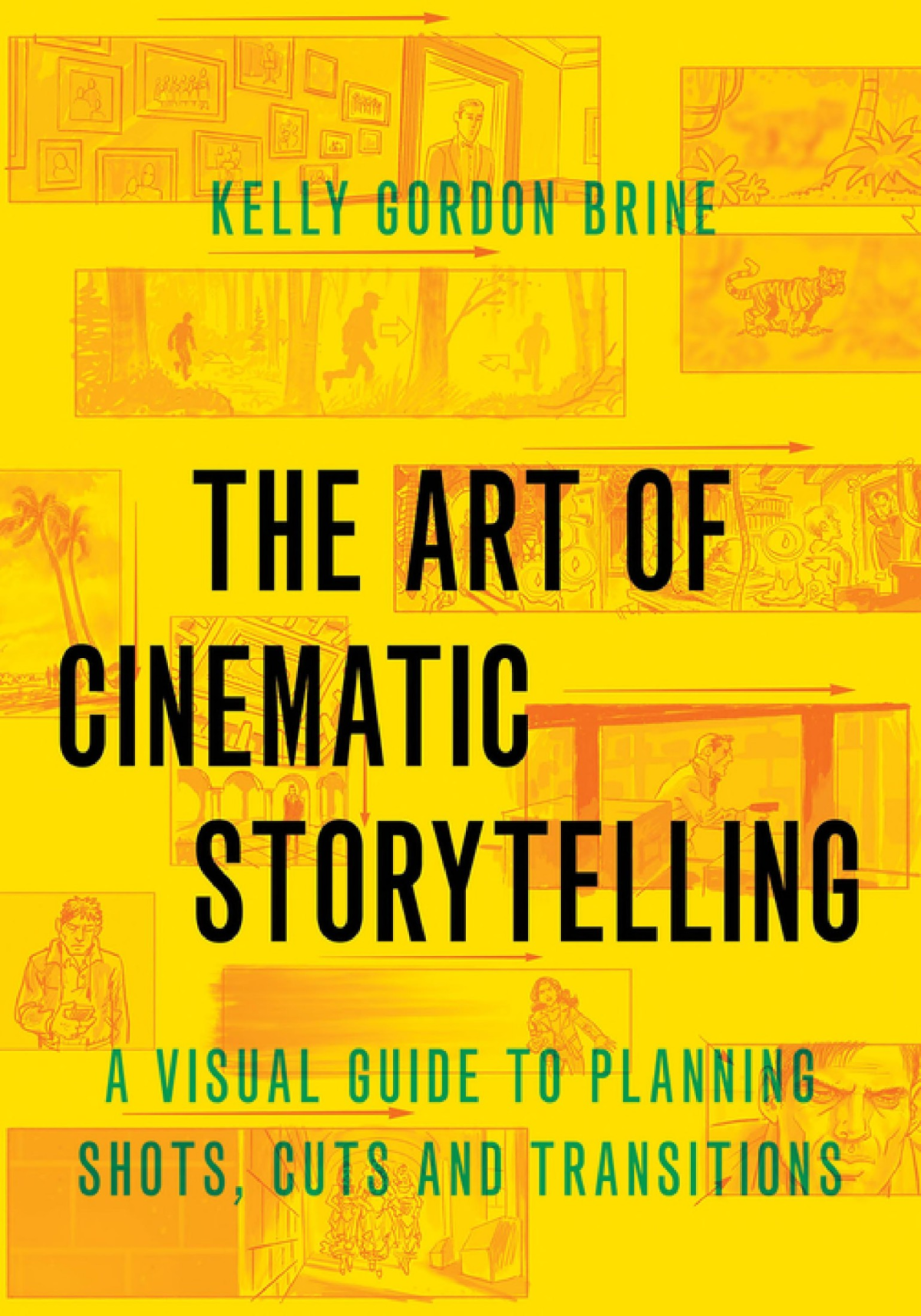
Product details:
ISBN 10:0190054352
ISBN 13:9780190054359
Author:Kelly Gordon Brine
To dramatize a story using moving images, a director must have a full understanding of the meaning and emotional effect of all the various types of shots and cuts that are available to advance the story. Drawing upon his extensive experience as a storyboard artist who has worked with over 200 directors and cinematographers on television series and movies, author Kelly Gordon Brine provides a practical and accessible introduction to the design of shots, cuts, and transitions for film, television, animation, video, and game design.With hundreds of illustrations and diagrams, concise explanations of essential storytelling concepts, and vivid examples, The Art of Cinematic Storytelling demystifies the visual design choices that are fundamental to directing and editing. The author delves deeply into the techniques that visual storytellers use to captivate their audience, including blocking, camera positioning, transitions, and planning shots with continuity editing in mind. Practical advice on how to clarify time, space, and motion in many common situations — such as dialogue, pursuits, and driving sequences — makes this book an invaluable guide for all aspiring filmmakers.
The Art of Cinematic Storytelling A Visual Guide to Planning Shots Cuts and Transitions 1st Table of contents:
1. Seven Film Storytelling Essentials
Adding Meaning through Juxtaposition
Telling the Story in a Series of Beats
Putting the Audience Where the Story Is
Making Cuts Smoother
Using Motivated and Unmotivated Camera Movement
Staying on One Side of the Action
Starting a New Scene
2. Using Storyboards
Shooting on Paper
Aspect Ratios
Indicating Action Using Arrows
Illustrating One Shot in Two Panels
Indicating Camera Movement
Adding Labels, Dialogue, and Notes
Numbering Scenes, Shots, Panels, and Pages
Drawing Maps
3. Shot Composition Basics
Composition Guidelines
Framing People
Some Classic Composition Techniques
Unconventional Framing
4. Camera Angles, Lenses, and Storytelling
Camera Height and Perspective
Depth of Field
Constant Object Size
Normal Lens (50mm) and Storytelling
Wide Lenses (under 50mm) and Storytelling
Long Lenses (over 50mm) and Storytelling
Pans, Tilts, and Lenses
Focus and Storytelling
Zooming and Storytelling
5. Designing Shots for Storytelling
Types of Camera Movement
Motivated and Unmotivated Camera Movement
Deciding Whose Scene It Is
Creating Objective and Subjective Shots
Shot Size and Storytelling
How the Direction of Movement Affects Storytelling
Increasing the Illusion of Depth
Shots That Capture Attention
Designing Shots That Create Moods
6. Continuity Editing Basics
The Importance of Left and Right to Editing
Characters, Settings, and Cuts
The Beta Effect and Shot Contrast
Continuous Time and Space within a Scene
Three Kinds of Jump Cuts
Avoiding Jump Cuts
7. Storytelling Cuts and Film Grammar
Reasons for Cutting
Avoiding Beta Effects When Cutting
How to Create Shot Contrast
The Match Cut
The Punch In
Reverse Angles
Entrances and Exits
Cutting When Traveling with Characters
Cutting between Stationary and Traveling Shots
Motivating and Hiding Cuts
Avoiding Cuts
8. 3D Spatial Continuity and 2D Screen Geography
Juxtaposition Implies a Context in Space and Time
What Is 3D Spatial Continuity?
What Is 2D Screen Geography?
Keeping Things on Their Side of the Screen
Points of View, Eyelines, and Matching
Tie-Up Shots
Opposed Looks and Eyeline Match
Matching Shots for Dialogue
Continuity of Screen Motion
Crossing the Axis but Preserving Continuity
Screen Geography That Spans Scenes
Intentionally Flipping Screen Geography
9. Compressing, Expanding, and Ending Scenes
Compressing Time within a Scene
Expanding Time within a Scene
Signaling the End of a Scene
10. Beginning Scenes and Using Transitions
Cuts to the Past, Present, and Future
A Jump Cut to a New Scene
A Juxtaposition That Links Two Scenes
A Hard Cut to a Character’s Action
An Establishing Shot
A Hard Cut to Close Action
A Hard Cut to a Close-Up of an Object
An Off-Screen Look or a POV
An Entrance
Using Action or Light to Reveal the Scene
An Unmotivated Camera Reveals the Scene
Other Ways to Open a Scene
Editing-Room Effects as Transitions
11. Scenes with Stationary Action
The Setting and the Mood
How to Make a Character Seem Important
A Character Looks at Something Nearby
A Character Looks at Something in the Distance
A Stationary Character Watches Something Pass
Using a False POV
A Character Stands Up or Sits Down
12. Walking and Running Characters
The Camera as an Objective Observer
The Camera Travels with the Character
The Camera Stops or Starts with a Traveling Character
Compressing Travel Time
Passing through a Doorway
A Character Walks in a Park or a Forest
13. Stories about Searching
An Example of a Story about a Search
The Search Storyboard
Making a Shot List and a Map
14. Stories about Following or Chasing
General Considerations
Starting a Pursuit from the Follower’s POV
Starting a Pursuit from the Target’s POV
Tie-Up Shots during a Pursuit
15. Two-Character Dialogue
The Geometry of Two-Character Conversations
Beginning Dialogue
Ending Dialogue
16. Three-Character Dialogue
Three Standing Characters Talk
Three Seated Characters Talk
Three Characters Walk and Talk
17. Group and Crowd Scenes
Four People Seated at a Table
A Boardroom Meeting
Formal Gatherings
Informal Gatherings with a Speaker and a Crowd
A Crowd Watches a Fight
18. Shooting Driving Scenes
A Car Drives Away
A Car Arrives
A Car Travels
A Driver with No Passengers
A Driver and a Front-Seat Passenger
A Driver with One Back-Seat Passenger
A Driver with Passengers in the Front and Back
A Driver with Two Back-Seat Passengers
Four Characters in a Car
19. Blocking for Cinematic Storytelling
An Overall Plan for the Scene
Some Classic Blocking
Examples of Storytelling Approaches
People also search for The Art of Cinematic Storytelling A Visual Guide to Planning Shots Cuts and Transitions 1st:
cinematic storytelling techniques
what is the art of storytelling
what is cinematic storytelling
steps in storytelling
cinematic storytelling definition
storytelling in cinema
Tags:
Kelly Gordon Brine,Storytelling,Cinematic,Planning,Shots
You may also like…
Business & Economics - Sales & Marketing
Fiction - Humour
Engineering
Television Field Production and Reporting: A Guide to Visual Storytelling 7th Edition Fred Shook
Arts - Graphic Arts
Business & Economics - Management & Leadership
Religion & Spirituality - Theosophy & New Age
Living the Sutras A Guide to Yoga Wisdom Beyond the Mat Kelly Dinardo
Cookbooks



